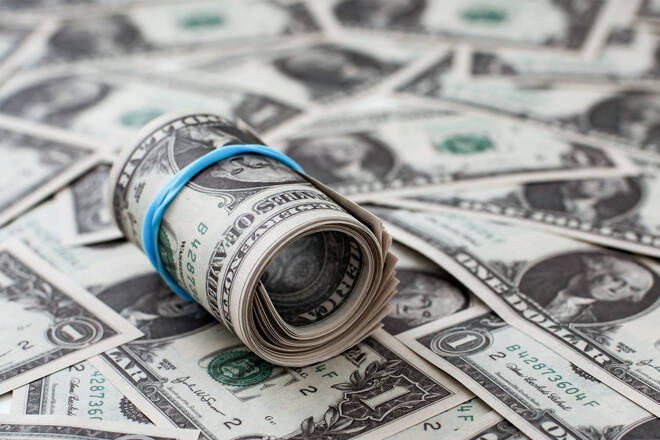Advertisement
Advertisement
DXY Rallies on Strong US Data, Hawkish Fed Commentary, European Stagflation Worries
By:
The euro and pound were battered as the energy crisis worsened/traders worried about the ECB/BoE hiking into a recession
Key Points
- The US dollar was stronger across the board on Thursday amid strong US data, hawkish Fedspeak and European stagflation worries.
- Fed’s James Bullard called for a 75 bps rate hike next month and rates nearing 4.0% by the year’s end.
- EUR and GBP were underperformers as European gas prices hit record highs/traders fretted about the ECB/BoE hiking into a recession.
Strong Data, Hawkish Fedspeak, International Pessimism Boosts Buck
Strong US economic data, hawkish commentary from Fed policymakers and pessimism about the European economic outlook lifted the US dollar across the board on Thursday. The Dollar Index, a trade-weighted basket of major USD pairs, was last trading 0.8% higher around 107.50, its highest level since mid-July.
The latest weekly jobless claims report showed a surprise drop in the number of new benefits claimants in the most recent reference week and a hefty positive revision for the week prior, bolstering the idea that the US labor market remains in rude health. Meanwhile, the Philadelphia Fed’s Manufacturing survey for August saw a much bigger than expected jump. Additional data showed that the fall in US Existing Home Sales in July was broadly in line with expectations.
Elsewhere, hawkish Fed policymaker James Bullard said in a WSJ article that he favors a 75 bps rate hike next month and wants interest rates at 3.75-4.0% by the year’s end, whilst calling market expectations for rate cuts in 2023 amid recession fears “premature”. Fellow Fed member Ester George, whilst not explicitly noting her preference between a 50 or 75 bps rate hike next month, also came across as hawkish, calling the case for further rate hikes “strong”. Fed’s Mary Daly’s tone was a little softer, calling for rates to go a little above 3.0% by the year’s end and then rise a little more in 2023.
Stagflation Fears Haunt Euro & Sterling
The euro and sterling were amongst the worst performing G10 currencies on the day on Thursday, with both shedding roughly 1.0% on the day versus the US dollar. The main driver of weakness in EUR/USD and GBP/USD was concerns about stagflation in Europe. A rise in European gas prices to fresh record highs worsened an already dire inflation outlook, which analysts fear will push the BoE and ECB into an even more aggressive pace of monetary tightening, even though the Eurozone/UK economies appear on the brink of recession.
A data release from the EU’s statistics office confirmed that Eurozone inflation hit its highest since the creation of the euro at 8.9% YoY in July, with over 4.0% of this explained by rising energy costs, a trend that appears to have worsened this month. Two ECB officials on Thursday said that the Eurozone inflation outlook had failed to improve since the bank’s July meeting, hinting towards another large rate hike at the upcoming September meeting.
Eurozone money markets were last pricing a 40% chance that the ECB lifts rates by 75 bps next month. The bank hiked its benchmark interest rate for the first time in over a decade last month by 50 bps to 0.0%. A more aggressive rate ECB rate hiking cycle adds to downside risks to a Eurozone economy that already appears to be in/nearing recession, according to various recent survey data releases.
Sterling, meanwhile, continued to struggle as investors deemed Wednesday’s hotter than expected UK consumer price inflation, which showed headline price pressures surpassing 10% YoY in July, as likely to encourage the Bank of England to raise interest rates in a series of 50 bps intervals at upcoming meetings, adding to downside risks to an already very weak UK economy.
Elsewhere, the Aussie, kiwi and loonie all fell versus the buck on Thursday but their losses were far more contained, helped by a jump in global energy prices. A MoM fall in Canadian producer prices won’t alleviate the BoC’s concerns about elevated inflation in Canada, analysts said, while Australian money markets were still leaning towards a 50 bps rate hike from the RBA next month despite mixed Australian jobs data.
About the Author
Joel Frankauthor
Joel Frank is an economics graduate from the University of Birmingham and has worked as a full-time financial market analyst since 2018. Joel specialises in the coverage of FX, equity, bond, commodity and crypto markets from both a fundamental and technical perspective.
Advertisement
